The idea of AI email copywriter has been discussed from the day ChatGPT was launched. Hardly surprising, because email has been one of the most powerful marketing channels.
If you ask for ChatGPT tips to random people, they’ll probably tell you not to worry. After all, how can an intelligent computing system go wrong? However, knowing ChatGPT can write your email copy is very different from knowing how to effectively use ChatGPT and get an email written for your subscribers.
Sure, ChatGPT can do some amazing things, save you tons of time, and improve your email marketing ROI. But saying it’s infallible is far from the truth.
In fact, currently ChatGPT has certain limitations, and it will take a bit of learning – on both sides – on how you use the ChatGPT AI for email copy.
Is ChatGPT copywriting perfect?
The short answer is, no.
But wait – it is still mighty impressive and will likely improve sooner than we believe.
Here are the three limitations of ChatGPT that you should understand while you learn how to use ChatGPT for your email marketing campaigns:
1. Hallucination: Wikipedia cites OpenAI, the makers of ChatGPT, as saying the AI tool “sometimes writes plausible-sounding but incorrect or nonsensical answers”. This is not unique to ChatGPT; it’s a limitation shared by most language models.
As a user you want to cross-check everything that ChatGPT produces as content, because there have been cases where the AI tool produced faulty content in direct contradiction to its training inputs.
2. Robotic output: The AI marketing copy you get from an AI tool won’t really match the engaging copy produced by an expert human. There will always be some work to do.
Besides, if you’re writing, say, re-engagement emails to sending an email to old lists, robotic styles work even less. There, you want your email to touch the right chord, and a human voice will be inevitable.
3. Inaccurate or obsolete results: ChatGPT uses data that is not the latest (this will change hopefully). The irony is it presents the results with such confidence that you are left wondering if you’re right in doubting the tool.
Look at the actual test we ran in April 2023: all the three URLs ChatGPT mentioned led to 404 errors – meaning that the page didn’t exist.

Interestingly, when we asked the tool if the page links were correct, it repeatedly assured us the the links were all correct and the pages did exist.
So what’s the best way to use ChatGPT?
Overcoming ChatGPT limitations like the above isn’t difficult, and given the tradeoff of the massive advantages, marketers are overwhelmingly in favor of using AI tools to write email copy. Using such tools:
- Saves you time
- Generates multiple alternatives
- Allows you to spend time on strategic activities
We spoke to a few marketers and HR professionals in order to learn what challenges they faced while using ChatGPT. In particular, we asked them about the challenge they were up against, what solution they came up with, and what were the final outcomes.
We believe these challenges will resonate with you. The solutions these professionals adopted will point you in the correct direction.
Here are the marketers’ experiences with ChatGPT and how they overcame the challenges.
1. Fixing brand voice mismatch
The challenge:
“One challenge we faced was making sure that the tone of the emails matched the voice of our brand. So the responses did not always reflect the personality and values of our company.” says Bonnie Whitfield, HR Director at FamilyDestinationsGuide.
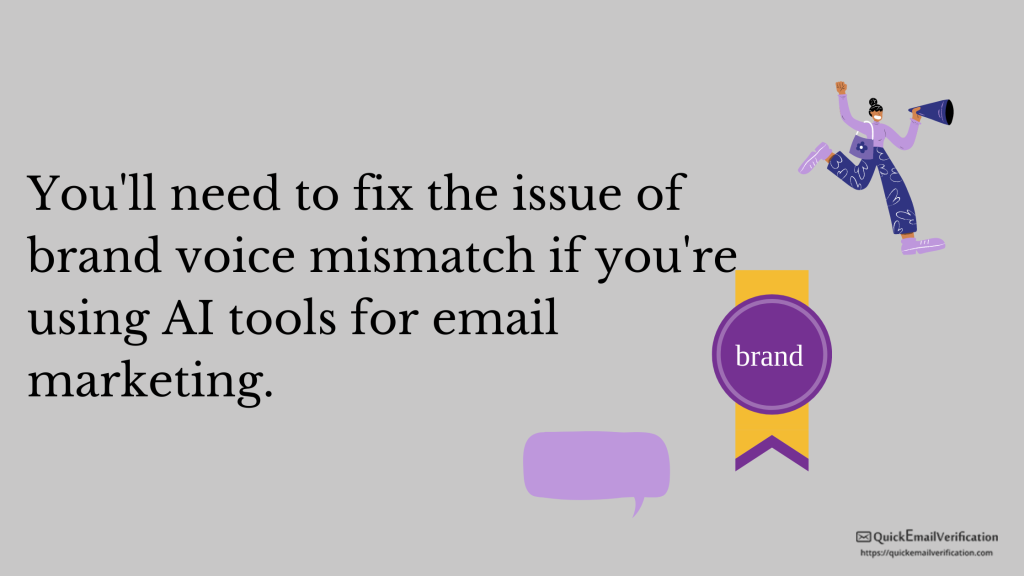
The solution
“We started being more specific with the prompts. And we began providing more context about our brand’s tone and messaging.” explains Whitfield. This allowed ChatGPT to generate responses that were more aligned with our brand voice.
The result:
After the fine-tuning, the Chatgpt copywriting outcomes improved. The emails generated were more engaging and targeted. This resulted in a higher open and click-through rate for them. “I am now a believer in the power of AI in email marketing. In fact, we plan to continue using ChatGPT to improve our campaigns.” adds Whitfield.
2. Figuring out the prompt
The challenge:
No one is perfect – and that applies to AI tools as well! So don’t expect the AI tool to fully understand what you want it to do. “Our main challenge was crafting the prompts that ChatGPT could accurately understand.” says Casey Jones, Head of Marketing at CJ&CO.
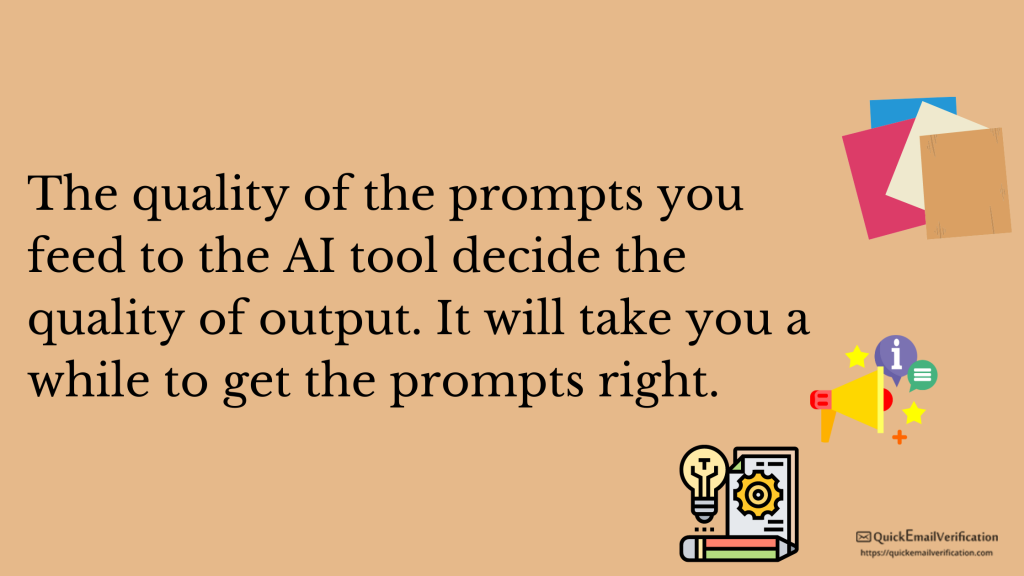
The solution:
Jones explains how they could overcome the challenge. “It took us quite some hit and trial to see which prompts work best. We even checked out a few videos about NLP. But finally we began seeing things better. So we created a worksheet for best working prompts for email marketing.”
The result:
“Pretty happy with the outcomes!” smiles Jones. “Because ChatGPT now understands what exactly we want it to do. Initially, it was a learning curve, but now, it dishes out really satisfactory results. So, it’s fair to say that it has given wings to our email marketing efforts.”
3. Ensuring accuracy and relevance
The challenge:
At the end of the day, ChatGPT hasn’t been perfected – at least not yet. As a result, the kind of email content it will produce won’t always be accurate, updated, or relevant. Sam O’Brien, founder WaterSportsWhiz shares their challenge, “Understanding its capabilities and accuracy of outputs – and based on that – refining our prompts … that required us to invest our time into it.”
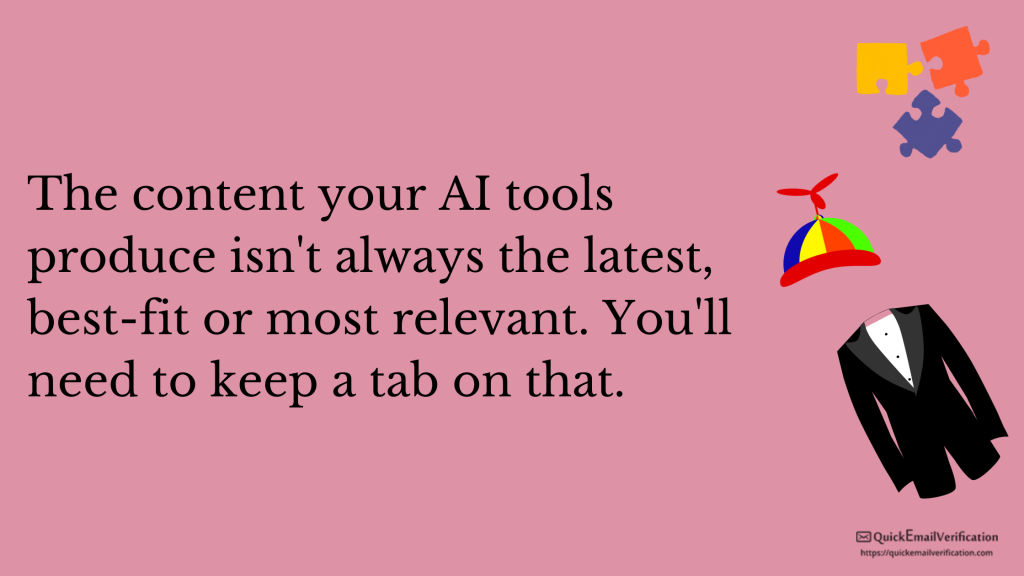
The solution:
WaterSportsWhiz began with using generic prompts and gradually adjusted them to include specific instructions. To ensure accuracy and relevance from the AI copywriter, they built processes. “We fact-checked information, updated outdated details, and removed any irrelevant content before sending out the emails.” O’Brien told us.
The result:
“We’ve seen an increase in open rates and click-through rates, leading to more website visits and higher overall engagement with our audience. “I think one great thing was it has streamlined our content creation process. That allows our team to focus on other important tasks and strategies.” says a happy O’Brien.
4. Getting a natural sounding email copy
The challenge:
It wouldn’t be accurate to say that if you use AI tools, you won’t have to do any work. “Repetition and an unnatural sound was a concern. Also, we’re I’m focused on the UK market. However, the ChatGPT language and sentences would sometimes come across as too American.” SEO specialist Roberto Broce of Factorial confides.
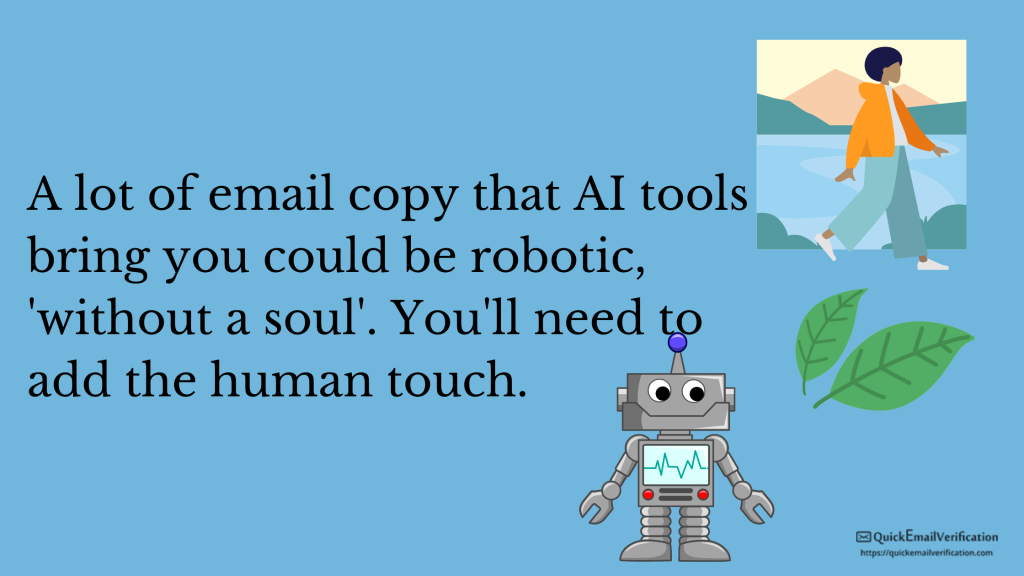
The solution:
Part of the solution was simple: revise the text to suit the style and language you want. “Simply performing a revision of the text prior to sending made a huge difference.” Broce elaborates on his ChatGPT tips. The part where the content was repetitive or even mechanical required more work.
The result:
Because they’ve pretty much overcome the challenges, Broce is happy. “I am very happy. This multiplied the pace of our work. What’s more, it has also helped me polish my writing. It’s a bit like having a permanent assistant.” he concludes.
5. Optimizing not always feasible
The challenge:
Donnie Rand, Marketing Coordinator at American Association of Owner Operators, is yet to see awesome results from ChatGPT. “For one, it can’t match our brand voice – the essence of email content. You might still need a number of prompts before you get what you want. Besides, you can’t trust it for personalization of emails either.”

The solution:
“We optimize the content that ChatGPT gives us, but frankly it’s a lot of work. We can’t do that for every email.” Rand says, explaining what might still be missing at ChatGPT.
The results:
Rand and their team end up spending a good deal of time figuring out some of the best ways to use ChatGPP to find the best prompts. “ChatGPT produces very bland content.” points out Rand, suggesting there are still a few gaps with AI tools.
6. Personalizing email copy to engage better
The challenge:
All humans think differently. And the same human think will think differently today and differently tomorrow. But AI tools don’t seem to have fully mimicked humans in this diversity of thinking.
AccountantOnline Marketing Manager Kelly Chan shares what it’s been like using the ChatGPT AI for email copy. “Our principal challenges while using ChatGPT were a lack of personalization and an understanding of context. AI tool like ChatGPT doesn’t have the kind of information you have about your subscribers or recipients. So the tool will most likely miss the context.”
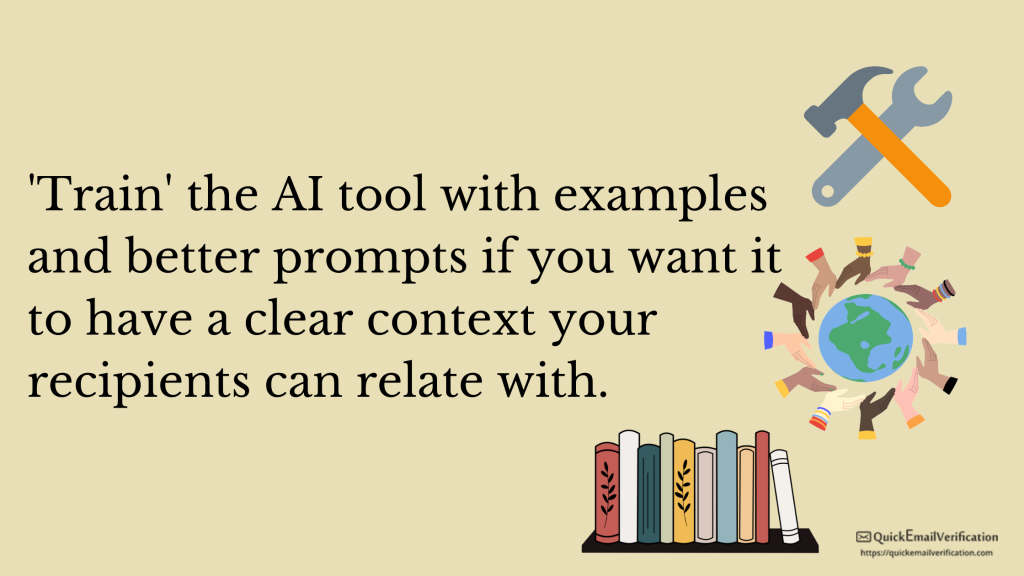
The solution:
Chan fills in the gaps by taking human help. “I overcome these obstacles by giving AI outputs a human touch. I also engage human content writers to personalize the output provided by ChatGPT and provide context.”
The result:
“In general, I’m satisfied with the results of using ChatGPT for email
marketing.” says a rather content Chan before adding, “It increased efficiency and sped up the content creation process. Basically saved me a significant amount of time.”
7. Formulating the right tone
The challenge:
When you’re sending out emails, you want your message to be spot on. Because unlike an in-person meeting, you won’t get a second chance. “Formulating emails with the right tone and style is critical. However, ChatGPT generates content based on data patterns. So you may not always create the desired tone or style of communication that corresponds with the specific audience being targeted.” points out Leslie Gilmour, CEO BeFoundSEO.
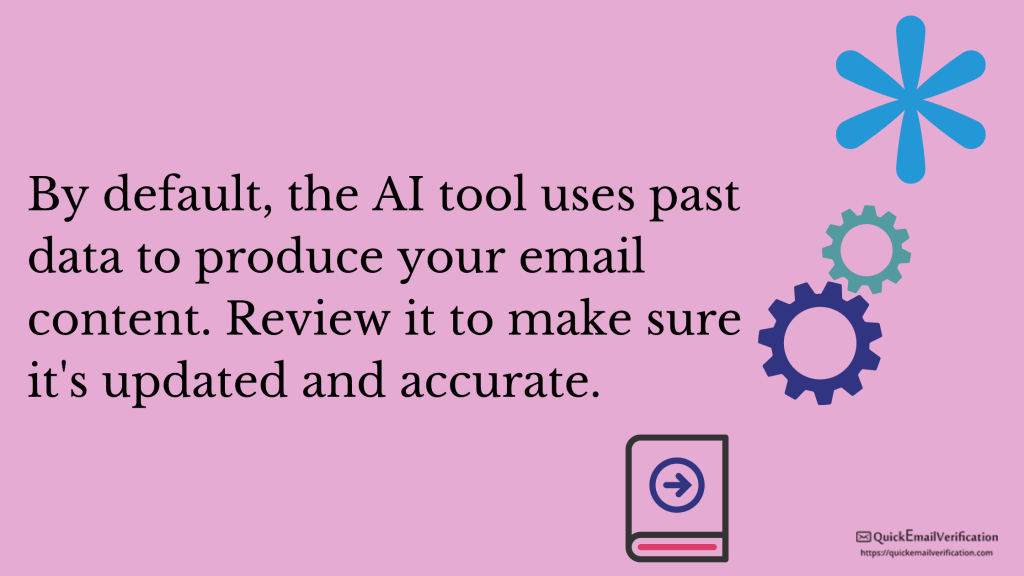
The solution:
Gilmour shares the solution they’ve used. “I fixed this by reviewing and editing the generated content to verify that it satisfied the specific context and requirements.” Most experts agree: if you’re not sure how to use ChatGPT, build processes for reviewing, editing, and fact-checking – and you’ll not be disappointed with what this tool can do.
The result:
As said earlier, ChatGPT isn’t your mythical magic wand. There will be wins and losses. “I’m only partially satisfied with ChatGPT because I still have to properly assess and edit content for email campaigns.” admits Gilour. Their team has to work even after ChatGPT has delivered the copy, which means ChatGPT has room for improvement.
Three FAQs(Freequently asked questions) about using ChatGPT for email
ChatGPT vs other AI email copywriting tools
1. How does ChatGPT compare to other AI email copywriting tools in terms of accuracy and effectiveness?
ChatGPT, like other AI email copywriting tools, has its strengths and limitations compared to its alternatives.
While it can save time and improve efficiency in generating email content, its output may require human review and editing to ensure accuracy. The degree of human intervention will increase as you aim for better relevance, especially in complex or nuanced messaging.
Industries best suited to ChatGPT
2. Are there specific industries or types of email campaigns for which ChatGPT is particularly well-suited or less effective?
ChatGPT is particularly well-suited for industries or campaigns where the content is more straightforward and less reliant on personalized or highly engaging language.
It may be less effective in industries or campaigns that require a strong emphasis on brand voice or extensive personalization.
As we write this (Feb 2024), please note that ChatGPT cannot browse the internet or access content from external URLs live.
ChatGPT best practices
3. What are some best practices for integrating human input and oversight into the AI-generated email copy to ensure quality and consistency with brand voice?
To integrate human input and oversight effectively, it’s important to establish clear guidelines and processes for reviewing and editing AI-generated content. This can help maintain consistency with brand voice and ensure that the final email copy meets the desired quality standards.
Also, be sure you understand and document your own voice well. That will help you bring in a simliar tone while you edit the copy ChatGPT shared with you.
The best way to use ChatGPT for email copy
Using an artificial intelligence tool is a bit like building a lovely house. No matter how brilliant an architect you hire, you’d still have to tell them what you’re looking for.
You’d need to give detailed instructions, suggest some changes based on your preferences, and accept a lot of their recommendations on structural security, building laws, and aesthetics. And there’s no one way of doing it.
Pretty much the same way, we wish we could tell you how to effectively use ChatGPT in one line. But that won’t work. On the one hand, there’s some limitations on the part of the current technological maturity of ChatGPT.
On the other hand, you’d still need to learn how to spell out requirements before the tool delivers great email copy for you.
The most exciting part of using AI tools like ChatGPT is they save you a huge amount of time and hold a huge promise. Once you build the editing and verification processes around it and master the art of writing better prompts, you’ll find it is one of the best tools for email copy you can hope for.

